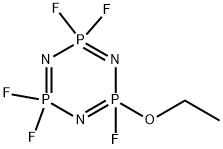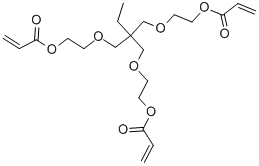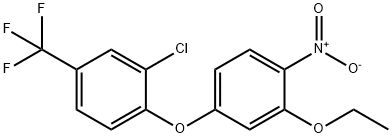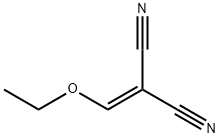Ethoxyquin
Synonym(s):1,2-Dihydro-6-ethoxy-2,2,4-trimethylquinoline;6-Ethoxy-1,2-dihydro-2,2,4-trimethylquinoline
- CAS NO.:91-53-2
- Empirical Formula: C14H19NO
- Molecular Weight: 217.31
- MDL number: MFCD00023883
- EINECS: 202-075-7
- SAFETY DATA SHEET (SDS)
- Update Date: 2025-12-07 19:09:50

What is Ethoxyquin?
Description
Ethoxyquin is used as an antioxidant in animal feed and caused contact dermatitis in a worker at an animal feed mill.
Chemical properties
Transparent yellow or brown viscous liquid. Discolors and stains badly. Soluble in benzene, gasoline, ether, ethanol, carbon tetrachloride, acetone, dichloroethane, insoluble in water.
The Uses of Ethoxyquin
Ethoxyquin is an antioxidant used in the preservation of color in chili powder, ground chili, and paprika.
The Uses of Ethoxyquin
Antioxidant in feed and food; antidegradation agent for rubber.
What are the applications of Application
Ethoxyquin is a synthetic antioxidant which inhibits chemically induced carcinogenesis
Definition
ChEBI: Ethoxyquin is a quinoline that is 1,2-dihydroquinoline bearing three methyl substituents at position 2, 2 and 4 as well as an ethoxy substituent at position 6. It has a role as a herbicide, an UDP-glucuronosyltransferase activator, a neuroprotective agent, a Hsp90 inhibitor, a genotoxin, a food antioxidant, a geroprotector and an antifungal agrochemical. It is a member of quinolines and an aromatic ether.
General Description
Clear light yellow to dark brown viscous liquid. Discolors and stains badly. Mercaptan-like odor.
Air & Water Reactions
Polymerizes and darkens in color on exposure to light and air. Insoluble in water.
Reactivity Profile
Ethoxyquin may undergo a hazardous polymerization at temperatures above 320° F. Tends to polymerize and darken in color on exposure to light and air. Not compatible with oxidizing agents and with strong acids .
Hazard
Toxic by ingestion.
Fire Hazard
Ethoxyquin is combustible.
Agricultural Uses
Insecticide, Fungicide, Plant growth regulator, Ingredient in other products: Used for preharvest or postharvest preservation of color in apples and pears. It is used as an antioxidant to preserve color in paprika and ground and powdered chili. Ethoxyquin is also a chemical preservative used in animal feed to prevent ingredients from reacting with oxygen and becoming rancid. It has been known to cause birth defects in pet birds and dogs. Not approved for use in EU countries[ 115]. Registered for use in the U.S.
Trade name
CHEMLEY®[C]; DECCOQUIN 305®; EMQ®; EQ®; NIFLEX®; NIX-SCALD®[C]; SANTOFLEX A®; SANTOFLEX AW®; SANTOQUIN®; SANTOQUINE®; STOP-SCALD®
Contact allergens
Ethoxyquin is used as an antioxidant in animal feed and caused contact dermatitis in a worker at an animal feed mill
Safety Profile
Poison by intraperitoneal route. Moderately toxic by ingestion. Mutation data reported. Combustible when exposed to heat or flame; can react with oxidizing materials. When heated to decomposition it emits toxic fumes of NOx.
Potential Exposure
Quinoline insecticide, fungicide and plant growth regulator. Also and ingredient in other products. Used for preharvest or postharvest preservation of color in apples and pears. It is used as an anti-oxidant to preserve color in paprika and ground and powdered chili. Ethoxyquin also is a chemical preservative used in animal feed to prevent ingredients from reacting with oxygen and becoming rancid. It has been known to cause birth defects in pet birds and dogs
Shipping
UN3082 Environmentally hazardous substances, liquid, n.o.s., Hazard class: 9; Labels: 9-Miscellaneous hazardous material, Technical Name Required
Purification Methods
Purify Ethoxyquin by fractional distillation in vacuo whereby the distillate solidifies to a glass. [Knoevenagel Chem Ber 54 1723, 1730 1921.] The methiodide has m 179o (from EtOH), and the 1-phenylcarbamoyl derivative has m 146-147o (from EtOH). [Beaver et al. J Am Chem Soc 79 1236 1957, Beilstein 21 III/IV 95.]
Incompatibilities
Polymerization can occur on contact with strong light and/or water. Decomposes in temperatures above 150℃. Keep away from oxidizers (chlorates, nitrates, peroxides, permanganates, perchlorates, chlorine, bromine, fluorine, etc.); strong acids.
Waste Disposal
Do not discharge into drains or sewers. Dispose of waste material as hazardous waste using a licensed disposal contractor to an approved landfill. Consult with environmental regulatory agencies for guidance on acceptable disposal practices. If allowed, Incineration with effluent gas scrubbing is recommended. Containers must be disposed of properly by following package label directions or by contacting your local or federal environmental control agency, or by contacting your regional EPA office
Properties of Ethoxyquin
| Melting point: | <0°C |
| Boiling point: | 123-125°C |
| Density | 1.03 g/mL at 20 °C (lit.) |
| vapor pressure | 0.035Pa at 25℃ |
| refractive index | 1.569~1.571 |
| Flash point: | 137 °C |
| storage temp. | 2-8°C |
| solubility | ethanol: 50 mL/L, clear, brown |
| form | neat |
| pka | 5.02±0.70(Predicted) |
| form | Liquid |
| color | Yellow to Very Dark Brown |
| Water Solubility | <0.1 g/100 mL at 20 ºC |
| Merck | 14,3753 |
| BRN | 158223 |
| Stability: | Stable. Combustible. Incompatible with oxidizing agents, strong acids. Polymerizes if heated. May polymerize upon exposure to light and air. |
| CAS DataBase Reference | 91-53-2(CAS DataBase Reference) |
| NIST Chemistry Reference | Quinoline, 6-ethoxy-1,2-dihydro-2,2,4-trimethyl-(91-53-2) |
| EPA Substance Registry System | Ethoxyquin (91-53-2) |
Safety information for Ethoxyquin
| Signal word | Warning |
| Pictogram(s) |
 Exclamation Mark Irritant GHS07 |
| GHS Hazard Statements |
H302:Acute toxicity,oral |
Computed Descriptors for Ethoxyquin
| InChIKey | DECIPOUIJURFOJ-UHFFFAOYSA-N |
New Products
4,4-Difluoropiperidine hydrochloride tert-butyl 9-methoxy-3-azaspiro[5.5]undecane-3-carboxylate Indole Methyl Resin N-Isopropylurea N,N-Dicyclohexylcarbodiimide(DCC) MELDRUMS ACID 5-METHYLISOXAZOLE-4-CARBOXYLIC ACID Magnessium Bis glycinate Zinc ascorbate 1-bromo-2-butyne 2-acetamidophenol 9(10H)-anthracenone Erythrosin B, 4-Piperidinopiperidine 2-((4-morpholinophenylamino) (methylthio) methylene) malononitrile 2,4-dihydroxybenzaldehyde 3-(4-morpholinophenylamino)-5-amino-1H-pyrazole-4-carbonitrile Methyl 2-methylquinoline-6-carboxylate 2,6-dichloro-4-nitropyridine 4-Bromo-2-chlorobenzonitrile 2-(benzylamino)acetic acid hydrochloride 4-(tert-Butoxycarbonylamino)but- 2-ynoic acid 3,4-dihydro-2H-benzo[b][1,4]dioxepine 1-Phenyl-1-cycloprppanecarboxylicacidRelated products of tetrahydrofuran








You may like
-
![6-Ethoxy-2,2,4-trimethyl-1,2-dihydroquinoline [Antioxidant for rubber] CAS 91-53-2](https://img.chemicalbook.in//Content/image/CP5.jpg) 6-Ethoxy-2,2,4-trimethyl-1,2-dihydroquinoline [Antioxidant for rubber] CAS 91-53-2View Details
6-Ethoxy-2,2,4-trimethyl-1,2-dihydroquinoline [Antioxidant for rubber] CAS 91-53-2View Details
91-53-2 -
 Ethoxyquin 95% CAS 91-53-2View Details
Ethoxyquin 95% CAS 91-53-2View Details
91-53-2 -
 Ethoxyquin 96% (HPLC) CAS 91-53-2View Details
Ethoxyquin 96% (HPLC) CAS 91-53-2View Details
91-53-2 -
 Ethoxyquin CAS 91-53-2View Details
Ethoxyquin CAS 91-53-2View Details
91-53-2 -
 Ethoxyquin CAS 91-53-2View Details
Ethoxyquin CAS 91-53-2View Details
91-53-2 -
 20677-73-0 (2,2-diethoxyethyl)methylamine 98%View Details
20677-73-0 (2,2-diethoxyethyl)methylamine 98%View Details
20677-73-0 -
 3-(4-(hydroxyamino)-1-oxoisoindolin-2-yl)piperidine-2,6-dione 98%View Details
3-(4-(hydroxyamino)-1-oxoisoindolin-2-yl)piperidine-2,6-dione 98%View Details -
 57381-49-4 2-bromo-4-chlorobenzonitrile 98%View Details
57381-49-4 2-bromo-4-chlorobenzonitrile 98%View Details
57381-49-4
